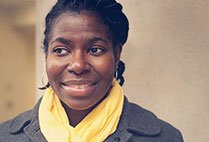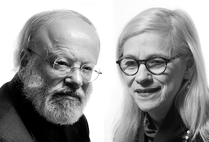The 15th-century French couple Jean “le Gros” and Perrette were married just four years before parting ways. Eventually, they settled down in different villages with new spouses. When Roman Catholic Church court officials found out that each had remarried while the other was still alive, they sentenced both to a year in prison. But only the husband, Jean, was exposed to public shaming on “the ladder of the scaffold” in front of the local cathedral, according to Sara McDougall (CAS’03, GRS’03), author of Bigamy and Christian Identity in Late Medieval Champagne (University of Pennsylvania Press, 2012).
In medieval Europe, only widows or widowers were permitted by the Church to remarry. This case of divorce, medieval-style, illustrates a stark gender difference that McDougall, an assistant professor of history at City University of New York’s John Jay College of Criminal Justice, found while combing through Church court records in the northern French diocese of Troyes: women investigated for what we might call bigamy today were treated with much greater leniency than men—if they were prosecuted at all. Most bigamous wives were fined only a few coins. McDougall calls it “a useful misogyny.”
“For a man to commit bigamy is to not only violate his own marriage, where he’s supposed to be the household head and responsible for his and his wife’s behavior,” says McDougall, “but it’s also leading this other woman into adultery.”
On the other hand, “if you were a woman and committed bigamy—well, it wasn’t your fault, because your husband should have been keeping a better eye on you. And the man you married should have checked into your background. There is this wonderful presumption of irresponsibility that women largely profited from.”
McDougall began working with court records as a student at the College of Arts & Sciences, where she earned a combined bachelor’s and master’s degree in history, minoring in music. At first intent on becoming an opera singer, she shifted her focus to history when she realized how much she missed books. “It’s an incredible department,” she says. She dedicated Bigamy and Christian Identity to Barbara Diefendorf, a CAS professor of history since 1980.
Working on her PhD dissertation at Yale University, McDougall combined her interests in court records, marriage, and gender issues. She spent a summer “essentially wandering around France” until she came across a trove of bigamy and marriage cases in the archives at Troyes, in the country’s Champagne region.
“I found this incredible story,” she says. “I knew there were bigamy prosecutions in the 16th century and that hundreds of people were prosecuted by the Spanish Inquisition and by the royal courts of France. It had a lot to do with the transformation of Catholic countries in response to the threat of the Protestant Reformation, and competing ideas about marriage. So it was absolutely fascinating to see these earlier 15th-century prosecutions that were not really supposed to be there.”
Although canon law prohibited bigamy across medieval Europe, most local Church courts, or officialities, appear to have looked the other way. Not so in northern France, says McDougall. “They were in the wake of the Hundred Years’ War, between England and France, and they were trying to make God happy with them,” she says. So officials were on the lookout for moral wrongdoing to prosecute.
A century later, bigamy prosecutions were commonplace throughout Europe. In fact, McDougall argues that illegal remarriage eventually became such a great concern to the Church that it was responsible for radical changes in marriage law, including the requirements that marriages be publicized in advance and presided over by a priest.
Earlier in the Middle Ages, the Church had permitted a practice known as “clandestine marriage.” This meant that “if two people, even young people without their parents’ consent, say, ‘I marry you,’ that’s it. You’re married forever,” McDougall says.
But it was the popular practice of bigamy, and not clandestine marriage, that concerned the courts in northern France, she argues. As her book shows, people often went to great lengths to remarry: Bertrand, a barrelmaker, pretended his first wife had died from the plague. Antoine Bonnart changed his name. Barthélèmy Bouvier bribed chaplains with cheese, wine, and a gold coin. Then, when confronted by the wife he’d abandoned, he tried to bribe her to pretend she was actually his maid.
They did it because “marriage mattered to them,” McDougall says. By the 15th century, married saints were venerated in sermons and marriage was being embraced as a way to become a good Christian. “So if you had been unhappily married the first time, or if a spouse vanished and you didn’t know if they were alive or dead, it was a way to find the kind of companionship that I think almost all of us prefer to have in life,” she says. It was “also a way to reintegrate into society.”
For her next book McDougall is lingering in medieval France, this time to investigate how society handled adultery.













































Related Stories
Good Christian Sex, in Marriage and Out
Alumna’s book challenges traditional theology of sex
Gay Marriage Decision Confers “Equal Citizenship,” BU Scholar Says
Methodist Bishop’s Gay Marriage Decision Cheers BU Church Leaders
Ends trials for clergy performing same-sex weddings in New York Conference
Post Your Comment